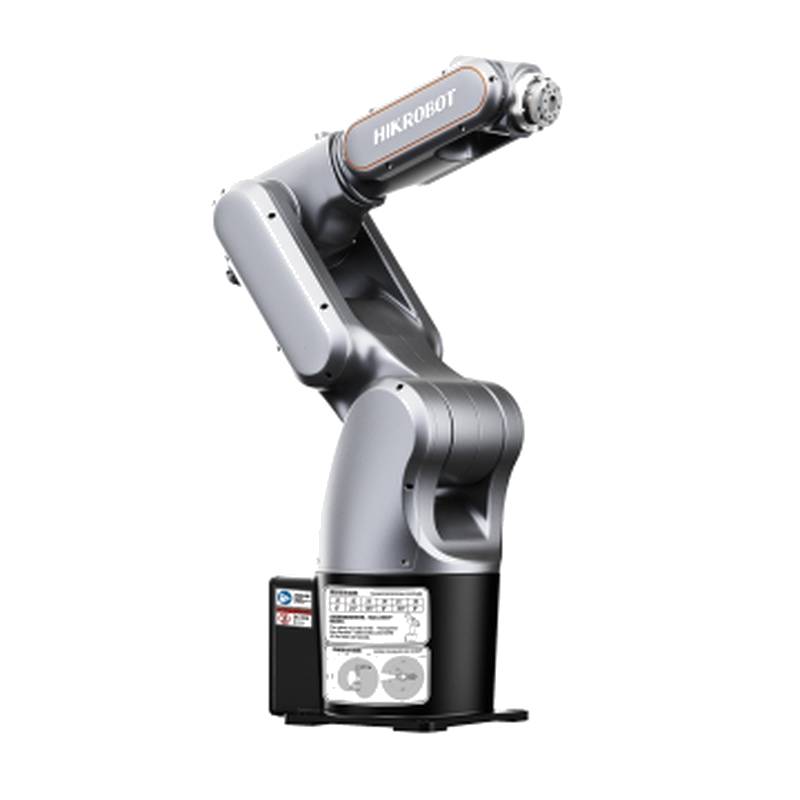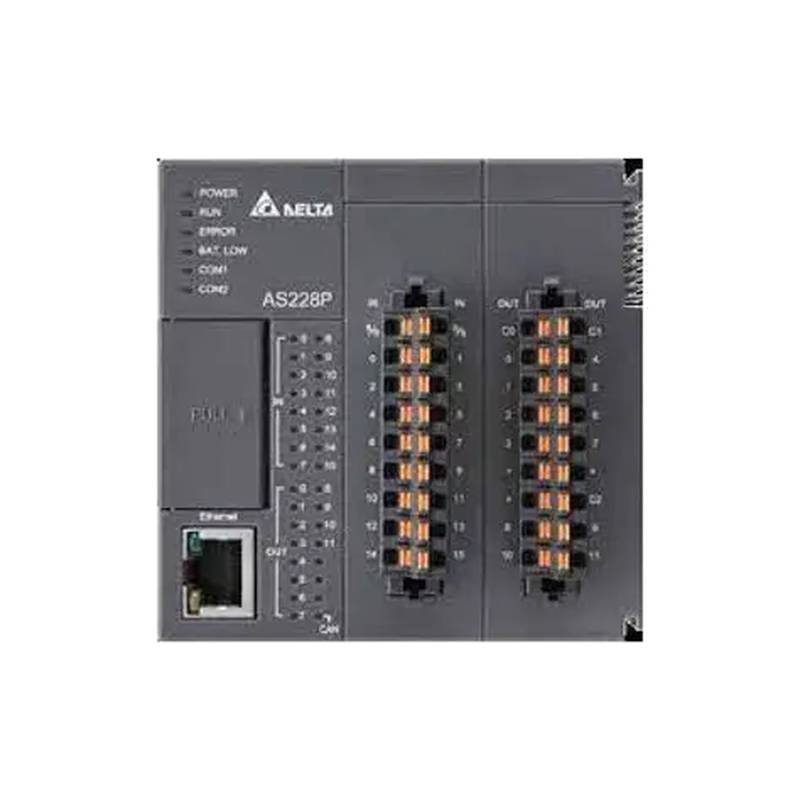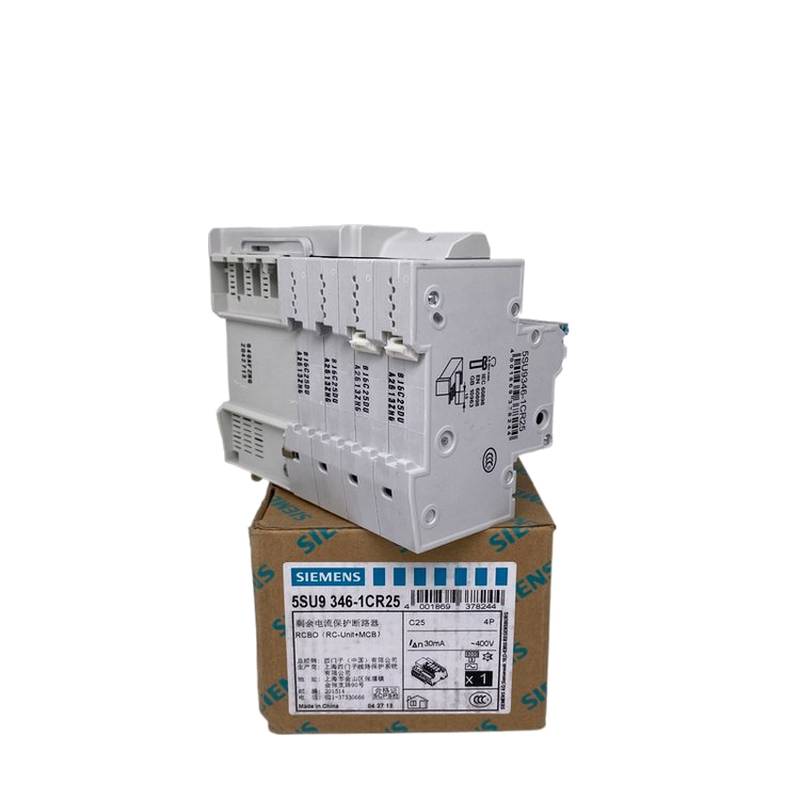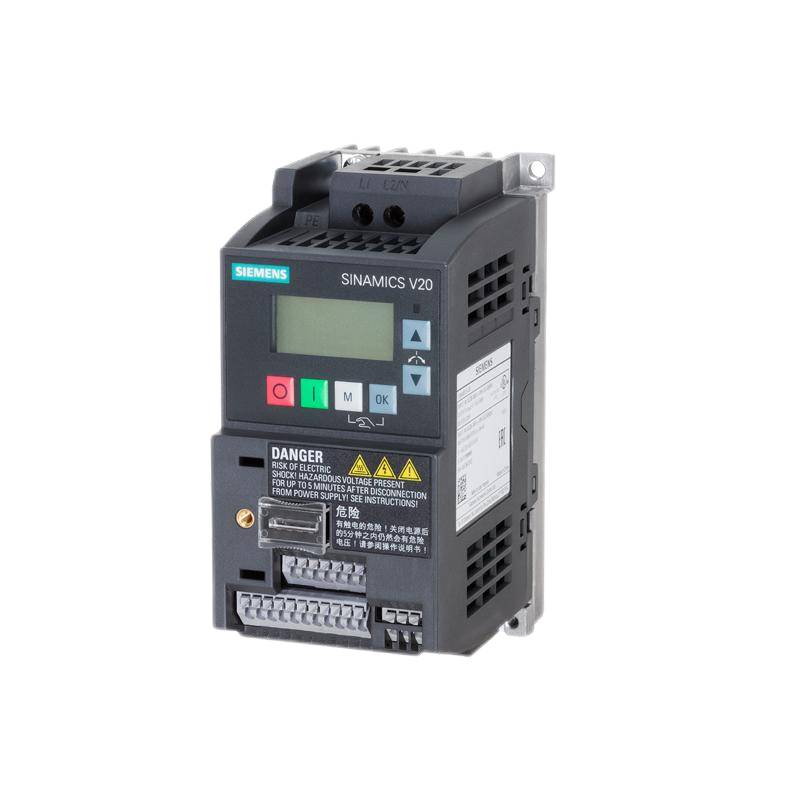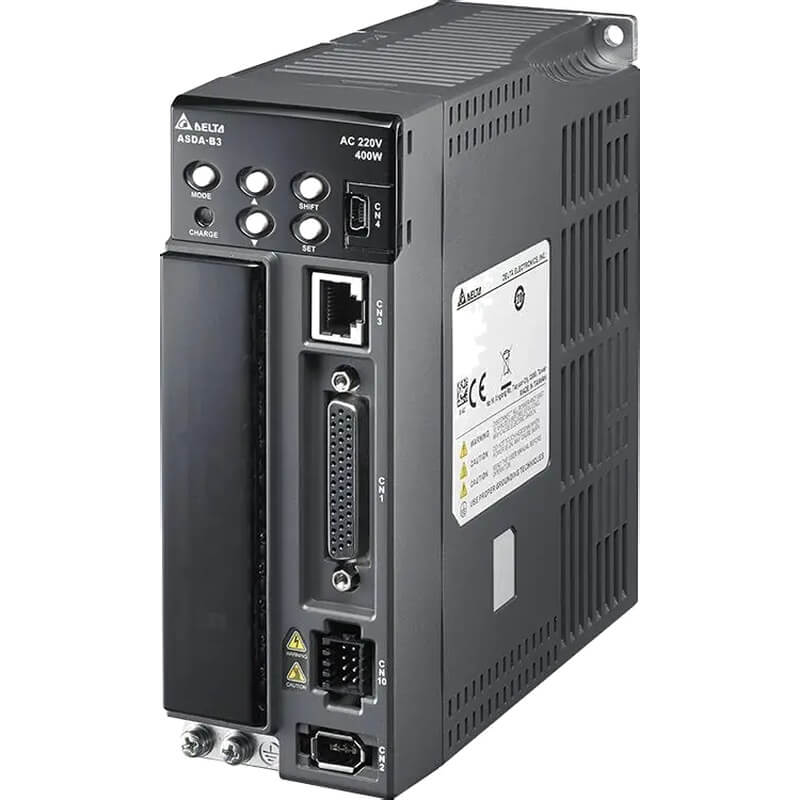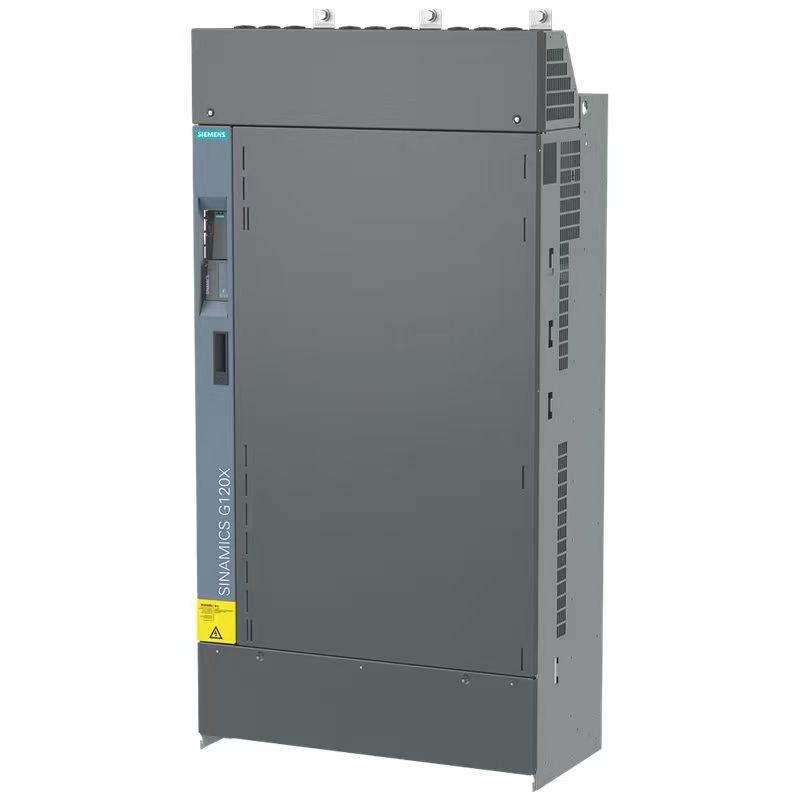
The HIKROBOT HAR7-910-C Long Arm SCARA Industrial Robot represents a significant advancement in high-speed, high-precision automation for demanding industrial environments. Engineered for exceptional performance, this SCARA robot boasts a robust 7kg payload capacity and an expansive 910mm reach, making it ideally suited for complex assembly, pick-and-place, and material handling tasks. Its advanced control system and high-rigidity structure ensure superior accuracy and repeatability, crucial for applications requiring micron-level precision. The HAR7-910-C is designed for seamless integration into existing production lines, offering a compelling blend of speed, reliability, and operational efficiency that drives productivity and reduces manufacturing costs.
Product Specifications
| Parameter | Specification |
| :------------------- | :------------------------------------------ |
| Model | HAR7-910-C |
| Robot Type | SCARA (Selective Compliance Assembly Robot Arm) |
| Max. Payload | 7 kg |
| Max. Reach | 910 mm |
| Repeatability | ±0.02 mm |
| Axis Structure | 4 Axes |
| Max. Speed (J1/J2) | 600°/s |
| Max. Speed (J3/J4) | 1200°/s |
| Mounting Position | Floor, Wall, Inverted |
| Power Supply | AC 220V ±10%, 50/60Hz |
| Control System | HIKROBOT Intelligent Control System |
| Communication | Ethernet/IP, Profinet, Modbus TCP |
| Working Temperature | 0-45°C |
| Humidity | 20-80% RH (non-condensing) |
Core Features & Market Positioning
The HIKROBOT HAR7-910-C distinguishes itself through its exceptional combination of extended reach and high-speed articulation, a combination critical for optimizing cycle times in complex assembly operations. Its core competitive advantage lies in delivering high precision (±0.02 mm repeatability) over a large working envelope, a feat few robots in its class can match. This makes it particularly attractive for industries demanding intricate manipulation, such as electronics manufacturing, automotive component assembly, and pharmaceutical packaging. The robot's intelligent control system, featuring advanced algorithms for motion planning and error compensation, further solidifies its market position as a premium solution for high-throughput, quality-critical applications.
Key Application Scenarios
The expansive 910mm reach of the HIKROBOT HAR7-910-C, coupled with its 7kg payload, makes it exceptionally versatile for a wide array of industrial tasks. It excels in high-speed pick-and-place operations, efficiently transferring components on assembly lines, particularly in the electronics sector where small, precise movements are paramount. Its accuracy also lends itself to intricate assembly processes, such as inserting components, screwing, or applying adhesives in automotive and medical device manufacturing. Furthermore, the robot is adept at palletizing and depalletizing heavier loads within its capacity, streamlining logistics and warehousing operations.
Practical System Integration Guidance
Integrating the HIKROBOT HAR7-910-C into an existing automation infrastructure is facilitated by its versatile mounting options—floor, wall, and inverted—allowing for optimal space utilization and process flow. The robot's controller supports common industrial communication protocols like Ethernet/IP, Profinet, and Modbus TCP, ensuring seamless data exchange with PLCs, vision systems, and other factory floor equipment. For programming, HIKROBOT typically offers intuitive software environments that may include graphical interfaces and robust simulation tools, simplifying motion path creation and logic development. Wiring considerations should focus on robust cable management to prevent interference and wear, ensuring reliable signal transmission for power, I/O, and communication.
Operation and Risk Mitigation
Safe operation of the HIKROBOT HAR7-910-C mandates adherence to safety standards and proper risk assessment. Implementing safety fencing, light curtains, and emergency stop mechanisms is crucial to protect personnel during operation. Users should be thoroughly trained on the robot's control system and emergency procedures. Common troubleshooting may involve checking communication links, ensuring proper payload distribution, and verifying axis limit settings. Understanding fault codes, typically detailed in the robot's maintenance manual, is vital for efficient diagnostics and prompt resolution of operational issues.
Scalability & Long-Term Value
The HIKROBOT HAR7-910-C is designed with future-proofing in mind, offering excellent scalability within HIKROBOT's ecosystem. Its compatibility with a range of end-effectors and vision systems allows for adaptation to evolving production requirements. Integration with Industry 4.0 initiatives is readily achievable through its advanced communication interfaces, enabling real-time data monitoring, predictive maintenance, and performance optimization. This ensures the robot remains a valuable asset, capable of supporting advanced digital manufacturing strategies and long-term operational efficiency improvements.
Frequently Asked Questions
What is the maximum payload of the HIKROBOT HAR7-910-C?
The HIKROBOT HAR7-910-C is engineered to handle a maximum payload of 7 kilograms. This capacity is suitable for a variety of demanding pick-and-place and assembly tasks. It allows for the manipulation of moderately heavy components with precision and speed.
This payload rating ensures the robot's stability and accuracy even when operating at its maximum capacity. Careful consideration of the end-effector's weight is crucial for maintaining optimal performance. Payload capacity directly impacts cycle times and the overall efficiency of automated processes.
Exceeding the specified 7kg payload can lead to decreased performance, increased wear, and potential system faults. Always consult the robot's documentation for specific guidelines on payload distribution and limitations.
What is the reach of the HIKROBOT HAR7-910-C industrial robot?
The HIKROBOT HAR7-910-C features an impressive maximum reach of 910 millimeters. This extended reach allows it to cover a large working envelope. It is ideal for applications requiring access to distant points within a production cell.
This significant reach is a key advantage for tasks such as large-scale palletizing or complex assembly requiring wide-ranging movements. It minimizes the need for multiple robots in certain scenarios, potentially reducing capital investment. The 910mm reach enables efficient operation across spacious work areas.
When planning a cell layout, the 910mm reach should be factored into the robot's operational envelope. This specification is critical for ensuring all target points are accessible. Users can achieve greater flexibility in cell design and workflow optimization.
How accurate is the HIKROBOT HAR7-910-C?
The HIKROBOT HAR7-910-C offers exceptional repeatability of ±0.02 mm. This high level of accuracy is essential for precision-driven manufacturing processes. It ensures consistent and reliable performance in critical applications.
This sub-millimeter repeatability is vital for tasks like intricate electronic component placement or precise assembly operations. It minimizes errors and improves product quality. The robot's robust design and advanced control system contribute to this precision.
Achieving this accuracy requires proper calibration and maintenance of the robot and its environment. Factors such as temperature fluctuations and vibration can affect performance. Regular checks ensure the robot consistently meets its specified accuracy.
What types of industries can benefit from using the HIKROBOT HAR7-910-C?
This SCARA robot is highly beneficial for the electronics manufacturing industry. Its speed and precision are ideal for component placement and intricate assembly tasks. It can significantly boost throughput and reduce defect rates in this sector.
The automotive sector also stands to gain considerably from the HAR7-910-C. It can be employed for assembling smaller parts, applying adhesives, or handling components on production lines. Its robust construction ensures reliability in demanding manufacturing environments.
Furthermore, the pharmaceutical and medical device industries can leverage this robot's accuracy. Its capabilities are well-suited for packaging, precise material handling, and quality control applications. The robot's hygienic design considerations are often a key factor here.
What are the main advantages of a SCARA robot like the HAR7-910-C?
SCARA robots are known for their high speed and excellent precision in the horizontal plane. This makes them exceptionally fast for pick-and-place and assembly tasks. The HAR7-910-C exemplifies these traits with its rapid axis movements.
Their design also allows for relatively simple programming and integration into existing automation systems. The typical four-axis configuration offers the necessary degrees of freedom for many common manufacturing operations. This efficiency translates to reduced cycle times and increased productivity.
Compared to other robot types, SCARA robots often provide a cost-effective solution for repetitive, high-volume tasks. Their specialized design optimizes them for horizontal manipulation, making them a go-to choice for specific applications.
What communication protocols does the HIKROBOT HAR7-910-C support?
The HAR7-910-C is equipped to handle industry-standard communication protocols for seamless factory integration. It supports Ethernet/IP, a widely used protocol in automation for peer-to-peer data exchange. This facilitates communication with PLCs and other devices.
Additionally, the robot integrates with Profinet, another robust industrial Ethernet protocol common in European manufacturing environments. This ensures compatibility with a broad range of Siemens and other Profinet-enabled equipment. Modbus TCP is also supported, offering a flexible option for various networking needs.
These communication capabilities are crucial for networked manufacturing environments and Industry 4.0 applications. They enable efficient data transfer for control, monitoring, and diagnostics. Proper configuration of these protocols is key to successful system integration.
How is the HIKROBOT HAR7-910-C programmed?
HIKROBOT typically provides intuitive programming environments for their robots. These often include graphical user interfaces (GUIs) for simplified motion path creation and logic development. This makes programming accessible to a wider range of users.
The programming software may also feature advanced simulation tools. These allow engineers to test and optimize robot programs virtually before deploying them on the physical robot. This reduces commissioning time and minimizes potential errors during operation.
While graphical interfaces are common, HIKROBOT robots may also support more advanced programming methods, potentially including scripting or dedicated robot languages, for complex custom applications. Consult the specific software documentation for detailed programming options.
What safety features are recommended when operating this robot?
Implementing robust physical safety measures is paramount for any industrial robot. This includes installing safety fencing around the robot's work envelope to prevent accidental human entry. Safety gates with interlocks ensure the robot stops if the enclosure is opened during operation.
Advanced safety systems like light curtains or laser scanners can provide a non-contact safety zone. These systems detect the presence of a person and trigger a safe stop or slow-down of the robot. Emergency stop buttons should be strategically placed for immediate manual shutdown.
Personnel operating or maintaining the robot must receive comprehensive safety training. This training should cover safe operating procedures, emergency protocols, and lockout/tagout procedures. Regular safety audits and risk assessments are essential to identify and mitigate potential hazards.
How can the HIKROBOT HAR7-910-C be integrated into an IIoT ecosystem?
The HAR7-910-C's support for standard industrial communication protocols like Ethernet/IP and Profinet is foundational for IIoT integration. These protocols allow the robot to send real-time operational data, such as cycle times, error logs, and status updates, to higher-level manufacturing execution systems (MES) or cloud platforms. This data stream is vital for monitoring, analysis, and optimization.
Leveraging this data, manufacturers can implement predictive maintenance strategies. By analyzing performance trends and identifying anomalies, potential equipment failures can be predicted and addressed proactively, minimizing unscheduled downtime. This transforms maintenance from reactive to preventative.
Furthermore, the robot's connectivity enables remote monitoring and control capabilities. Authorized personnel can access performance metrics and diagnostic information from anywhere, facilitating faster troubleshooting and support. This enhances overall operational visibility and agility within the smart factory concept.
What kind of maintenance is typically required for this robot?
Routine maintenance for the HIKROBOT HAR7-910-C focuses on ensuring consistent performance and longevity. This includes regular visual inspections of the robot arm, cables, and end-effector for any signs of wear, damage, or loose connections. Cleaning of sensors and critical components is also essential.
Lubrication of moving parts according to the manufacturer's schedule is crucial for maintaining smooth operation and preventing premature wear. This typically involves checking and replenishing grease or oil in the robot's gearboxes and bearings. Calibration checks, especially for repeatability and accuracy, should be performed periodically to ensure the robot operates within its specified tolerances.
Preventative maintenance, guided by the robot's operational hours and performance data, is key. This might involve scheduled replacement of wear items like seals or filters. Following the manufacturer's detailed maintenance manual is the best practice for ensuring optimal robot performance and safety.














